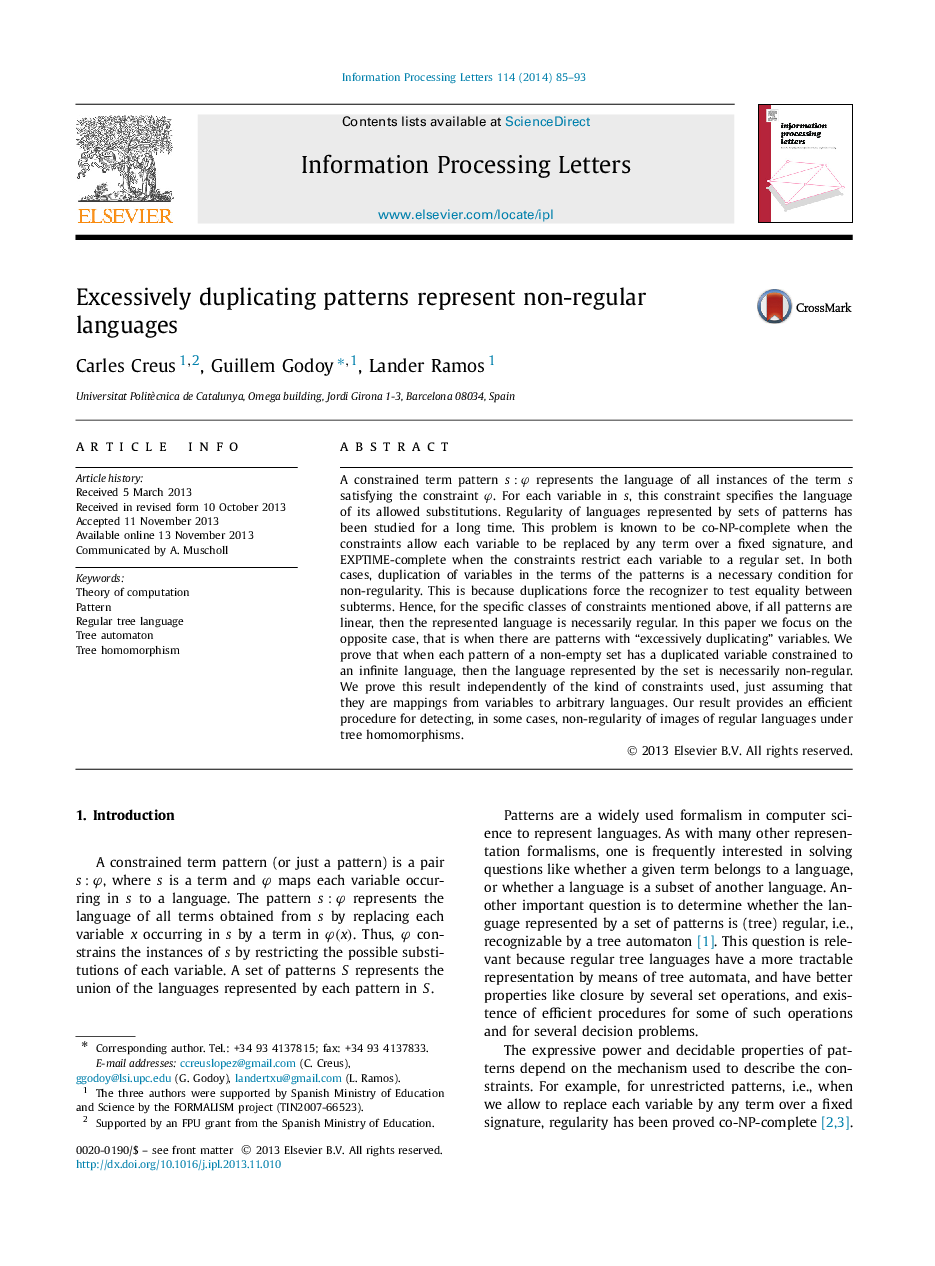| Article ID | Journal | Published Year | Pages | File Type |
|---|---|---|---|---|
| 427413 | Information Processing Letters | 2014 | 9 Pages |
•A pattern
A constrained term pattern s:φs:φ represents the language of all instances of the term s satisfying the constraint φ. For each variable in s, this constraint specifies the language of its allowed substitutions. Regularity of languages represented by sets of patterns has been studied for a long time. This problem is known to be co-NP-complete when the constraints allow each variable to be replaced by any term over a fixed signature, and EXPTIME-complete when the constraints restrict each variable to a regular set. In both cases, duplication of variables in the terms of the patterns is a necessary condition for non-regularity. This is because duplications force the recognizer to test equality between subterms. Hence, for the specific classes of constraints mentioned above, if all patterns are linear, then the represented language is necessarily regular. In this paper we focus on the opposite case, that is when there are patterns with “excessively duplicating” variables. We prove that when each pattern of a non-empty set has a duplicated variable constrained to an infinite language, then the language represented by the set is necessarily non-regular. We prove this result independently of the kind of constraints used, just assuming that they are mappings from variables to arbitrary languages. Our result provides an efficient procedure for detecting, in some cases, non-regularity of images of regular languages under tree homomorphisms.
